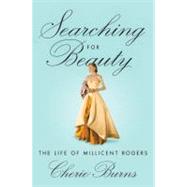
“Millicent Rogers is truly an American Legend and Cherie Burns has finally given us a wonderful biography about her!”--Diane Von Furstenberg
“What a fabulous life! Rogers was an American original who charged through her wildly varied career with coruscating originality and maximum style. Hers was a high-wire act of glamour, art, philanthropy, and rapier smarts. With this fine biography, Cherie Burns makes it abundantly clear that, in our sorry age of Paris Hilton brats, they just don't make heiresses like Millicent Rogers anymore.”--Hampton Sides, bestselling author of “Blood and Thunder”
"Cheri Burns has given us a glittering tale of Millicent Rogers, one of the most glamorous women of the twentieth century. Anyone who is interested in the annals of high society will be fascinated with this book. Burns has reached far beyond the gossip of how the very rich live and produced an intimate and deeply personal view of Millicent Rogers, her family and her unending search for love and beauty."--Adam Lewis, author of The Great Lady Decorators, Billy Baldwin, Albert Hadley and Van Day Truex
“Standard oil heiress and fashion icon Millicent Rogers, a beauty who traveled with thirty-five suitcases and seven dachshunds, made headlines throughout her life for her famous romances and influence as a style-setter. Cherie Burns has written a page-turning tale of a society rebel.”--Meryl Gordon, author of Mrs. Astor Regrets
The New copy of this book will include any supplemental materials advertised. Please check the title of the book to determine if it should include any access cards, study guides, lab manuals, CDs, etc.
The Used, Rental and eBook copies of this book are not guaranteed to include any supplemental materials. Typically, only the book itself is included. This is true even if the title states it includes any access cards, study guides, lab manuals, CDs, etc.